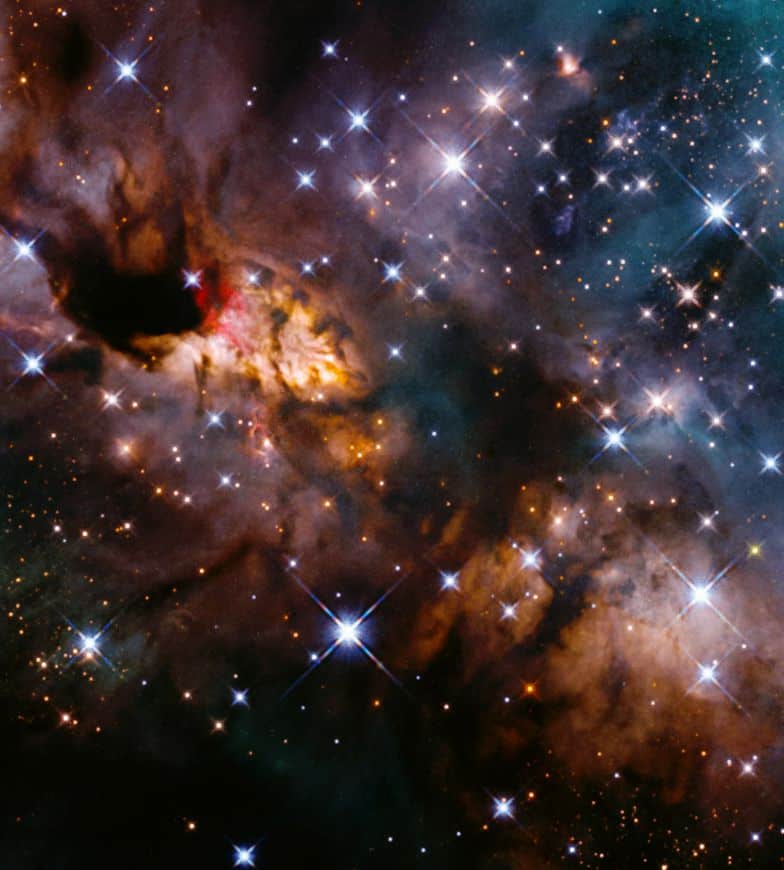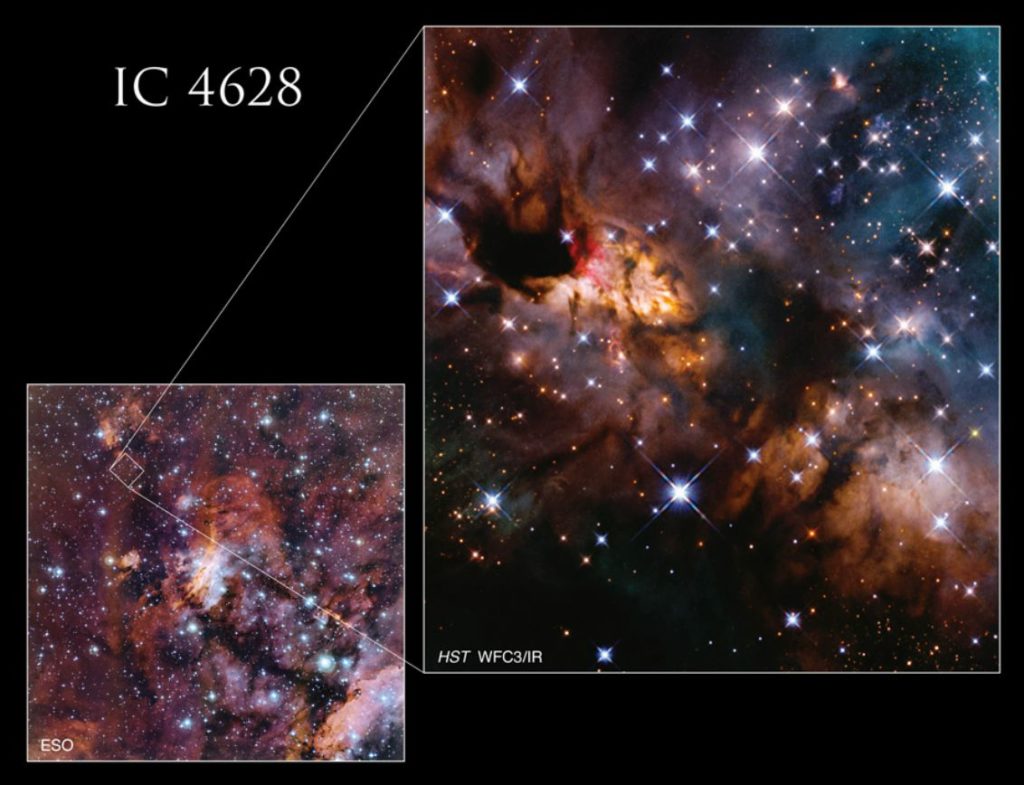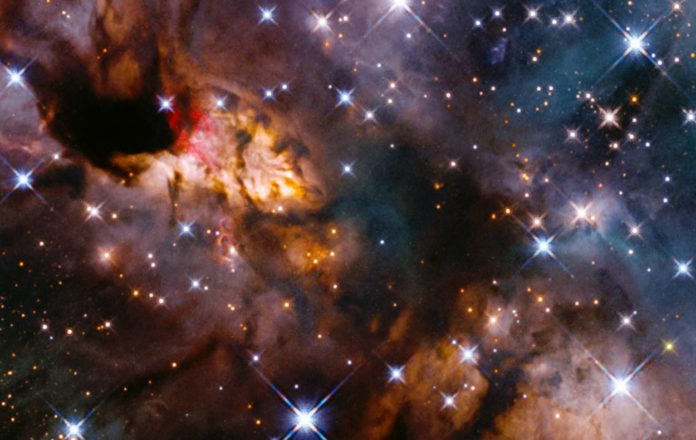Hubble’s eye captures breathtaking detail of the nebula’s structure, including bright patches of blazing gas.
The Prawn Nebula is a large stellar nursery in Scorpius, 6,000 light years away. The nebula is 250 light-years away and covers an area four times the size of the full moon, but it emits light in wavelengths that the human eye cannot see, making it appear weak to observers on Earth.
Hubble’s eye captures breathtaking detail of the nebula’s structure, including bright patches of blazing gas.
Nebula IC 4628 or “Prawn Nebula,” as it’s more often known, has been ionized by radiation from neighboring stars. The nebula’s hydrogen atoms lose electrons as a result of the radiation from these enormous stars.

The nebula’s gas glows because of the light emitted by the energetic electrons as they recombine with hydrogen nuclei to return to a lower energy state. The presence of ionized iron (Fe II) emission is shown by the color red in this image.

This image was taken by the Hubble Space Telescope as part of a survey of huge and intermediate-sized “protostars,” or freshly formed stars.
Astronomers utilized Hubble’s Wide Field Camera 3’s infrared sensitivity to seek for hydrogen ionized by ultraviolet radiation ionized by protostars, star jets, and other characteristics.
Image Credit: NASA
You were reading: NASA Hubble Telescope Captures Breathtaking View of Prawn Nebula
